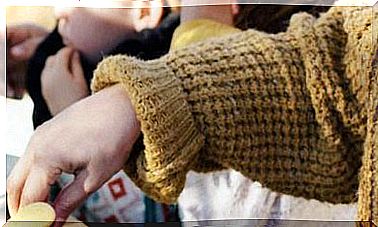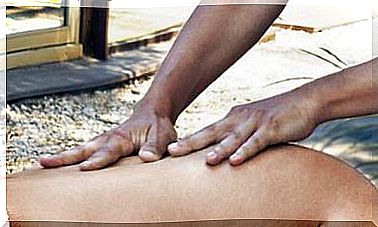ADHD: Myth Or Reality?
Attention deficit hyperactivity disorder (ADHD) is predicted by a long controversy

Every year students with a diagnosis of ADHD (attention deficit hyperactivity disorder) come to my classes. I never notice anything special. Some are passive and insecure. The medication keeps them slightly dazed and they hardly communicate with their peers.
If you talk to them, you notice that their self-esteem is on the rocks. They think that they are not like the others and they seem resigned. His alleged attention deficit seems more like apathy and low motivation.
I think some perceive themselves as disposable material. Their grades are usually mediocre, perhaps because they don’t trust their abilities.
Others are more restless and rowdy a bit, but in a way that is perfectly understandable at their age. They don’t seem sick, but mischievous and fickle, like so many other boys.
Finally, there are those who appear to have broken ties with the outside world, retreating into an intimate and recondite world. Many times I have thought that their mind has been trapped by their fantasies and daydreams, perhaps because reality is unbearable for them.
Ivan’s story
Ivan belonged to that group. He sat by the window and gazed out at the landscape. While I was explaining something on the board, his mind slipped away like a kite taking advantage of a gust of wind. He didn’t take notes.
He preferred to draw or fold a piece of paper into a dragon or a unicorn. He was passionate about origami and medieval castle sketches.
At evaluation meetings, teachers used to comment: “Ivan is always in his world.” I wondered if his world wasn’t more exhilarating than the tedious world of official programming.
I have always felt very close to the “bad students”, because I never managed to adapt to the routine of school. I did not pay attention to the teachers, I misorganized my academic obligations – or rather, I did not organize anything -, I tended to carry out several activities at the same time – I still do – I constantly looked for new stimuli, I broke the rules, I was impatient and impulsive, fanciful and creative, reluctantly accepting authority, sometimes angered, tended to evade with fantasies, or talking nonstop.
All of these traits coincide with the “symptoms” of ADHD. Does that mean that I was a child with that “disorder”? In the 1960s, Spanish psychology was in the Pleistocene. The main pedagogical resource was the stick syrup, which was administered in the form of capons, slaps and humiliating punishments.
If I had been born thirty years later, perhaps they would have prescribed me psychotropic drugs …
I was not able to help Iván, because the teachers who have been teaching for many years have been trained thinking that the essential thing was to know the subject, not the student. I have always tried to highlight the positive traits of my students, praise their initiatives and respect their opinions.
Ivan changed institute after failing a lot of subjects. Years later, I met him in the center of Madrid. Not without difficulties, he had finished high school and was studying graphic design.
His shyness had turned into mild sociability. We talked for a few minutes and parted ways.
I watched him as he walked away, thinking that behind each case of ADHD, the failure of all beats, but with the hope that one day parents, families and students will be able to illuminate an educational model capable of integrating all children, transmitting to them that each one of them represents something unique, valuable and unrepeatable.
ADHD: what is it and why is it controversial?
What is the history of ADHD? Before answering, it is convenient to relate the increasing medicalization of human behavior throughout the 20th century.
In 1952, the first edition of the DSM appeared, the Diagnostic and Statistical Manual of Mental Disorders, produced by the American Psychiatric Association.
The purpose was to elaborate an exhaustive classification of the different mental disorders to facilitate the diagnosis and the treatment, without showing preference for any school, current or psychiatric theory.
Since then, five editions have appeared that have added new pathologies or disorders. The latest (DSM-V) was published on May 18, 2013.
The working groups that have participated in successive editions assure that they have never intended to classify people, but rather to classify disorders, but there have been many criticisms denouncing that all behaviors that are discordant with the predominant cultural paradigm are described as pathologies.
DSM: medicalizing children’s behaviors
For example, it is perplexing that DSM-IV transformed childhood and youth rebellion into a so-called mental illness called “oppositional defiant disorder.”
Isn’t it a common trait of the youngest to practice disobedience and nonconformity? Repeatedly arguing with adults and questioning their orders is not a pathological symptom that must be eradicated by psychoactive drugs.
I have always thought that rebellion is a sign of mental hygiene. It is impossible to build your own identity without rebelling against adults, subjecting their values to critical scrutiny.
Without that confrontation, the need to abolish physical punishment would never have been raised, assuming that children should grow up free of any form of intimidation.
Could it not be said that in today’s psychiatry there is an attempt to repress and subdue the less submissive children and adolescents? Is it risky to say that DSM is an exercise in social engineering, an abusive medicalization of atypical or socially inappropriate behaviors?
It is common to read that ADHD was discovered by the psychiatrist Leon Eisenberg, but in the 1930s there was already talk of restless children with difficulty concentrating, pointing out that perhaps they suffered from post-brain syndrome.
The researchers discarded the idea because in most cases there was no history of encephalitis, although they did not stop pointing out the existence of a disorder that affected concentration, hindering learning and the socialization process.
In the sixties, Eisenberg addressed the issue and, after studying countless cases, he concluded that these children experienced a “hyperkinetic reaction”, so they should be treated with dextroamphetamine and methylphenidate. In 1968, the “hyperkinetic reaction of childhood” was incorporated into the DSM, although over the years it changed its name to the current Attention Deficit Hyperactivity Disorder.
The abuse of ADHD diagnosis
The German weekly Der Spiegel published statements in 2012 that Eisenberg had made before he died. In them he stated that ADHD was a “fictitious disease”:
“ADHD is an example of an overdiagnosed disease. Child psychiatry must determine in detail the psychosocial reasons that can lead to behavior problems. Are there fights with the parents, the mother and the father live together, are there problems in the family? These questions are very important, but they take a long time to answer. It is faster to prescribe a pill. The genetic predisposition for ADHD is completely overrated ”.
Eisenberg did not rectify at the last minute, presenting himself as an imposter. He simply pointed out that the diagnosis had been abused and too much emphasis had been placed on the genetic load, recommending that the prescription of psychotropic drugs be postponed until it was verified that there was no problem that could be solved by psychotherapy.
Medication for “upset” children
His warning was not very successful. In 1983, 43 kg of methylphenidate were sold in German pharmacies. By 2011, the quantity had risen to 1,760 kg, and the upward trend continues. In the United States, almost 6% of children under the age of twelve have received a diagnosis of ADHD and are treated with psychotropic drugs.
Within this spiral, it has been established that 60% of those affected suffer from some associated pathology : anxiety, depression, bipolarity, Tourette syndrome.
In less than a decade, the number of children under the age of ten with a diagnosis of ADHD and bipolar disorder has multiplied by 40
Sometimes they are three or four-year-old children, medicated almost like adults despite the fact that some studies have warned of the dangers of psychotropic drugs in minors, since in not a few cases they induce suicidal tendencies or violent behaviors. Eric Harris and Dylan Klebol, authors of the 1999 Columbine High School massacre, were undergoing treatment for various personality disorders, and several psychiatrists have pointed out that psychoactive drugs may have accentuated their antisocial behaviors.
Undiagnosed: a disease that is pure smoke
There is no diagnostic test that proves the existence of ADHD. There are no cognitive, metabolic or neurological markers that provide us with proven data.
It seems to me that it is not possible to consider symptoms of a disorder that a child gets bored with master classes, resists memorizing data and dates, gets distracted and plays with his classmates, makes mischief or despairs with the routine of a nineteenth-century pedagogy, that forces students not to move from their desks for six endless hours, sometimes more.
Official teaching standardizes, classifies and excludes. Its objective is not to educate, but to normalize. That is, to integrate the student into an economic and social system, without asking him if he wants to participate in it or prefers to remain on the sidelines.
I can’t believe that almost 6% of children suffer from ADHD and, in many cases, associated pathologies. I believe that many of these children could unfold their potential in a less oppressive environment, developing freely and spontaneously according to their concerns and creativity.
The pedagogical objectives of official education are a euphemism that conceals the intention – conscious or not – to reduce the human being to an economic variable.
Faced with an ADHD “label”, what can we do?
Eisenberg was right in stating that the quickest thing to do is to prescribe a pill and not spend time exploring the environment and circumstances surrounding that child.
Attention deficit and hyperactivity do not express a pathology of the brain, but an adaptive conflict to a system created without taking into account the needs of children and young people.
1. Delaying schooling
We might wonder if the main cause of inattention, hyperactivity, and learning disabilities will not be early schooling and overly academic education ahead of time.
A study carried out by a group of researchers from Stanford University (United States) concludes that delaying entry to school for one year from 5 to 6 years dramatically reduces the incidence of ADHD: “
We found that delaying entry for a year reduced inattention and hyperactivity by 73% at the age of 11, and practically eliminated the probability of having ‘abnormal’ or higher than normal inattentive or hyperactive behavior ”.
2. Outdoors instead of indoors
Once they are in school, we have standardized that children spend eight hours in artificial spaces. But science shows us that in natural environments we feel fuller and that in them it is easier to regain balance.
Favoring regular contact with the ground instead of asphalt, or the sun instead of artificial lights, can be of great help for children and young people.
In Finland and the Nordic countries, children start school at the age of 7. Before, all they do is play, most of the time outdoors.
3. Avoid standardizing activities
In Spain, 3-4 year old children are already sitting in front of a table, coloring cards and learning to write and count, long before they are even minimally interested or mature for it, and sacrificing the most important thing they can do at that age: play freely.
4. Flexibility to self-regulate
Children are surrounded by norms that adults create in their day because they offer us security, they make us believe – wrongly – that we have more control of the situations that we live with them.
We should review them to give them space and time to learn to take care of their own well-being: to be able to drink, eat, move, rest when each one needs it.
5. Observe the uniqueness and need of each one
Sometimes, without realizing it, we promote “bulk” activities from home or school, the same for everyone, without stopping to appreciate the true needs of each child or each member of the family.
Being open to their demands, rather than filling in the agenda ourselves, can be a first step towards your own self-listening.
6. Labels and comparisons, out
The trial only alienates us, pigeonholes them and leaves them trapped in a role from which it is very difficult to escape. We know that each one is unique, but how many times we spend our day making comparisons between siblings or with their friends.
7. Check the schedules according to their biorhythms
At each age, human beings have different needs. In adolescence, for example, biorhythms lead you to be more mentally awake from mid-morning and not first thing in the morning. Sleeping in later is natural and allows them to make the necessary synapses and brain connections during this stage.
8. No to rewards or punishments
They seem effective, but only in the superficial and immediate, but not in the deep. We apparently managed to model their behavior; even so, there are other more empathetic ways to achieve healthier bonds based on the presence of the adult who nurtures, soothes (gives peace) and supports the child who is restless.
9. Avoid exciting and toxic
We can check if his diet is favoring his balance and well-being. However, instead of forbidding refined and sugary foods, we can offer you healthy foods, or leave them within your reach, and life experiences that help your fulfillment.









